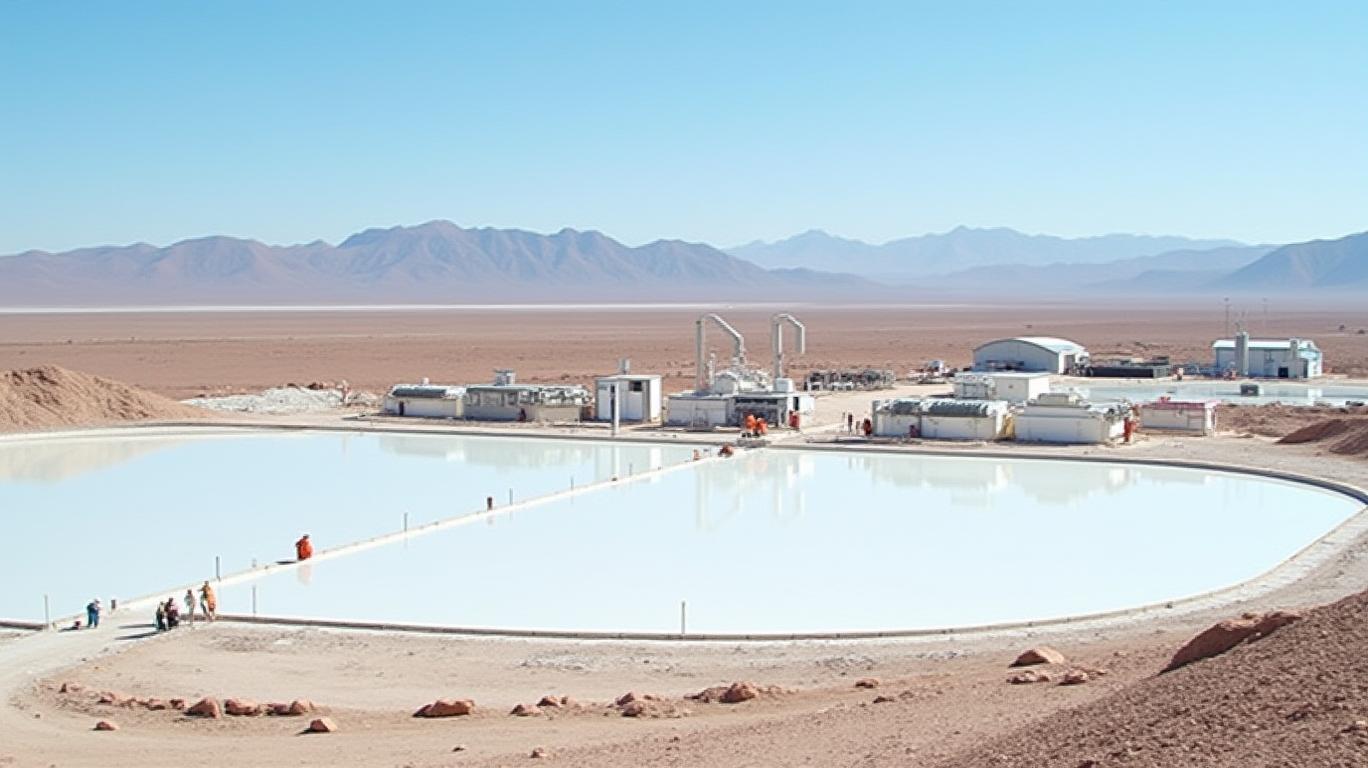Rio Tinto's Lithium Play: The Undervalued Catalyst for the Energy Transition
The global energy transition is fueling an insatiable appetite for lithium, with demand projected to surge over 10% annually through 2040. Yet, supply constraints loom large, with analysts warning of a potential deficit by 2030 as electric vehicle adoption outpaces mining expansion. Amid this volatility, Rio Tinto is positioning itself as a lithium titan—leveraging strategic partnerships, cutting-edge technology, and South America's richest lithium deposits to capitalize on the coming crunch. For investors, this is a rare opportunity to buy into a secular megatrend at a valuation discount that could vanish once production gears up.

The Lithium Landscape: Scarcity Meets Ambition
Lithium's role as the “white gold” of the energy transition is undeniable. By 2030, battery demand alone could require 3.5 million metric tons of lithium carbonate equivalent (LCE) annually—nearly triple today's production. Yet, the supply chain remains fragile. Existing projects face permitting delays, environmental opposition, and water scarcity in arid regions like Chile's Atacama Desert. This is where Rio Tinto's South American playbook shines.
The company's $3.8 billion investment in Chilean and Argentine lithium projects—spanning the Salares Altoandinos, Salar de Maricunga, and Rincon expansions—could deliver 140,000 metric tons of LCE annually by 2030, or 15% of today's global supply. These projects are not marginal additions; they're designed to dominate. For example, the Salar de Maricunga's brines, with lithium concentrations of 800–1,200 ppm, promise lowest-quartile production costs, while the Rincon expansion's 60,000-ton/year capacity by 2028 will rival top-tier players like Albemarle.
Rio Tinto's stock (RIO) has lagged behind lithium sector gains, creating a valuation disconnect.
The ESG Edge: Water, Technology, and Partnerships
Critics argue that lithium mining's environmental toll—water depletion, habitat destruction, and community conflicts—could derail projects. But Rio Tinto is countering this with Direct Lithium Extraction (DLE), a game-changer that reduces water use by 90% compared to traditional evaporation ponds. Deployed at Rincon and Salares Altoandinos, DLE's modular design allows faster scaling and minimal land disruption. This isn't just greenwashing; it's a $2.1 billion R&D legacy spanning 28 years, giving Rio Tinto a first-mover advantage in a sector desperate for sustainable solutions.
Equally critical are its partnerships. In Chile, alliances with state-owned ENAMI (Salares Altoandinos) and Codelco (Maricunga) ensure regulatory alignment and local stakeholder buy-in. These deals, structured to prioritize Chilean resource sovereignty, de-risk permitting and community backlash—key hurdles for foreign miners. Meanwhile, the 50/50 joint venture with Quebec's Investissement Québec at the Nemaska project in Canada adds North American supply diversity, shielding investors from geopolitical lithium bottlenecks.
Why Act Now? Closing the Valuation Gap
Markets have yet to fully price in Rio Tinto's lithium upside. While lithium-focused peers likeioneer (LIT) have surged 40% since 2020, Rio Tinto's stock has languished—a reflection of its diversified portfolio and near-term commodity headwinds. But this creates an asymmetric opportunity.
By 2028, Rincon's first production and Maricunga's feasibility completion will mark inflection points, likely narrowing the valuation gap. Meanwhile, the $10–11 billion annual capex budget ensures funding without equity dilution, while its 3.2% dividend yield offers a safety net.
The Bottom Line: A Lithium Leader at a Bargain Price
Rio Tinto isn't just a lithium player—it's a strategic masterstroke in one of the 21st century's most critical supply chains. With projects timed to meet the 2030 demand spike, a technological moat to mitigate ESG risks, and a balance sheet to outlast market pessimism, this is a bet on the future of energy.
Investors who act now—before production milestones materialize—could secure a stake in a company poised to turn lithium scarcity into shareholder abundance. The question isn't whether lithium will be the next supercycle winner, but whether you'll be positioned to profit from it.
Rio's projects align with peak demand growth, creating a multi-year earnings catalyst.
The clock is ticking. Act before the lithium boom leaves you in the dust.

Comments
No comments yet